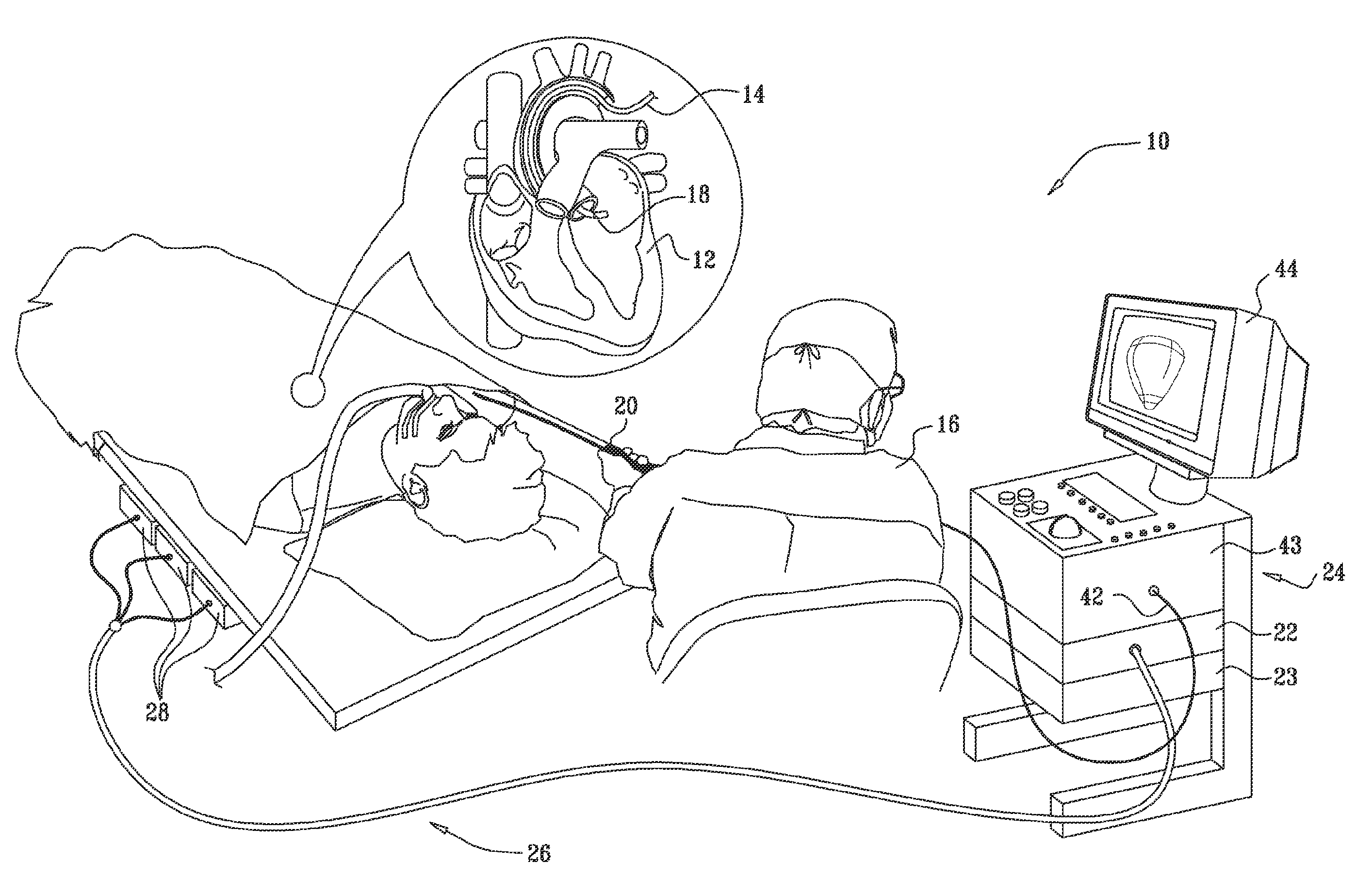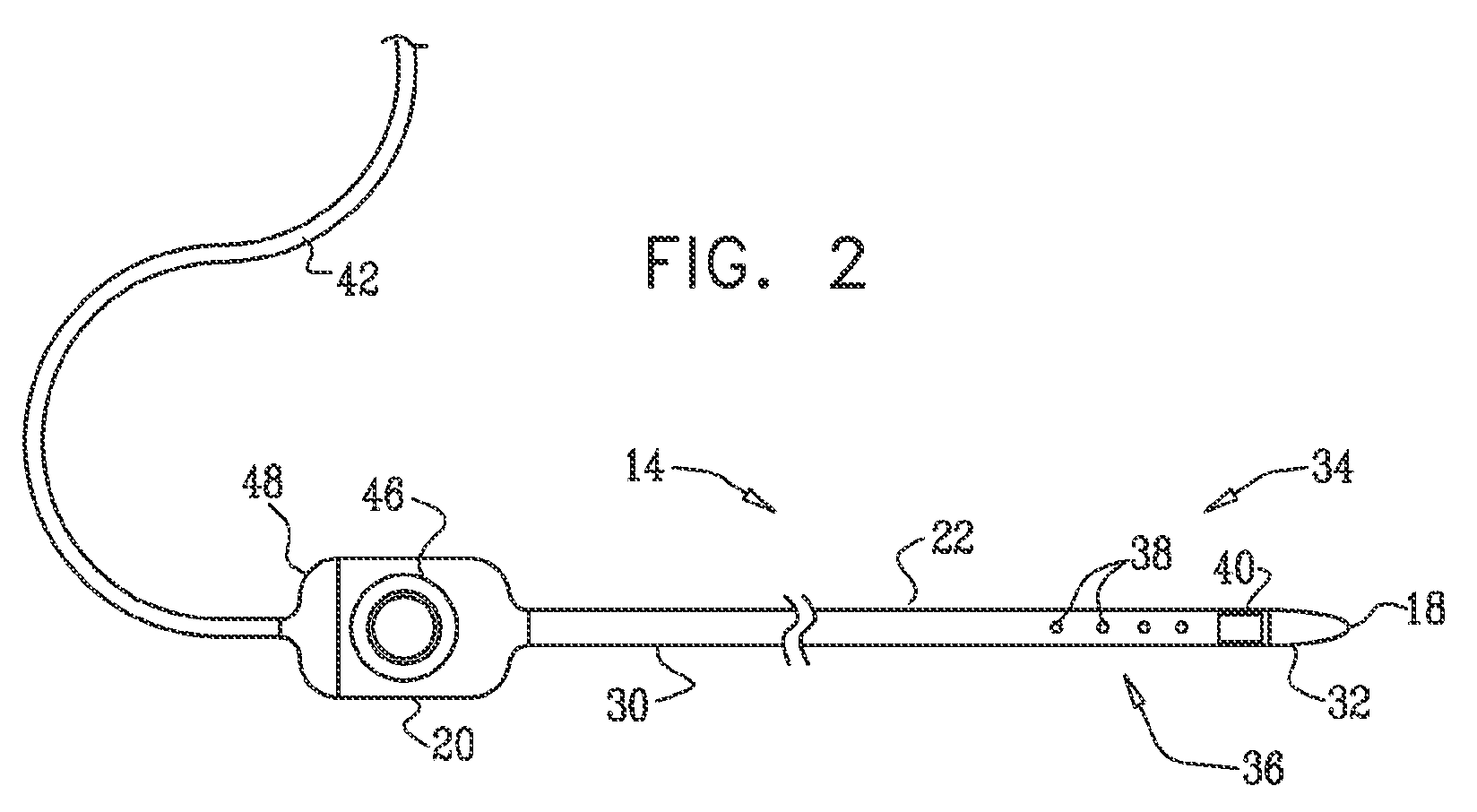Automated pace-mapping for identification of cardiac arrhythmic conductive pathways and foci
a technology of conductive pathways and foci, applied in the field of diagnosis and treatment of cardiac arrhythmias, can solve the problems of long time period, unstable ventricular tachycardia (vt), and patients who cannot tolerate mapping procedures, and achieve the effect of accurate activation map
- Summary
- Abstract
- Description
- Claims
- Application Information
AI Technical Summary
Benefits of technology
Problems solved by technology
Method used
Image
Examples
embodiment 1
Alternate Embodiment 1
[0128]Referring again to FIG. 1, in this embodiment a cardiologist paces the heart at different locations in the ventricle while observing a 12-lead body-surface ECG, as described above. Upon observing a suspicious pattern in the ECG (containing tachycardia or other arrhythmic components), the cardiologist signals the system 10 to mark the time interval containing the suspicious pattern as well as the pacing location at which the pattern occurred. Multiple intervals may be marked in this manner. The system 10 then learns the characteristics of the suspicious ECG pattern.
[0129]Subsequently, the cardiologist scans the pacing catheter over the inner wall of the ventricle, while the system 10 monitors and analyzes the ECG signals to detect further occurrences of the pattern it has learned. The system 10 marks any locations at which the pattern recurs as possible VT foci. The cardiologist may then ablate these foci or conduct further studies around the focal locatio...
embodiment 2
Alternate Embodiment 2
[0152]In this embodiment, instead of using a conventional body surface electrocardiogram, electrocardiographic signals are captured using remote interrogation of implanted patient devices, typically intracardiac devices (ICDs) such as defibrillators, cardioverters, and pacemakers. Such devices may be provided with memories for storing signals that reflect cardiac events. Historic signals are downloaded as recorded (historic) signals or in realtime to a processing system and compared with induced signal patterns (a first type of realtime signal) and with pace mapped patterns (a second type of realtime signal). The historic signals may include spontaneous episodes of ventricular tachycardia. In some embodiments, the signals may be transmitted to and stored on a server and then transferred to the processing system. A suitable intracardiac device for capturing the signals is the Medtronic InSync® ICD. Other suitable devices are commercially available.
[0153]Referenc...
PUM
 Login to View More
Login to View More Abstract
Description
Claims
Application Information
 Login to View More
Login to View More - R&D
- Intellectual Property
- Life Sciences
- Materials
- Tech Scout
- Unparalleled Data Quality
- Higher Quality Content
- 60% Fewer Hallucinations
Browse by: Latest US Patents, China's latest patents, Technical Efficacy Thesaurus, Application Domain, Technology Topic, Popular Technical Reports.
© 2025 PatSnap. All rights reserved.Legal|Privacy policy|Modern Slavery Act Transparency Statement|Sitemap|About US| Contact US: help@patsnap.com



